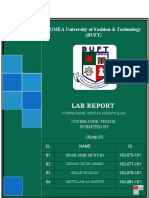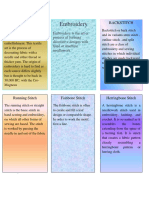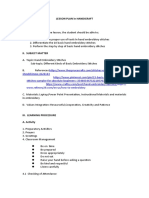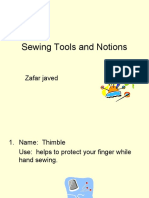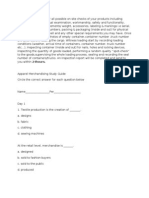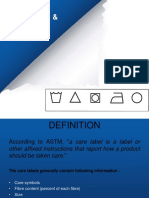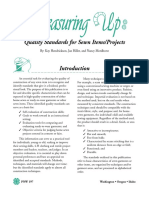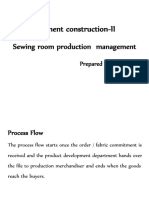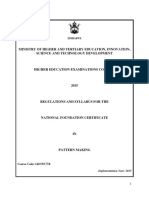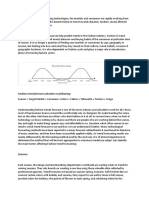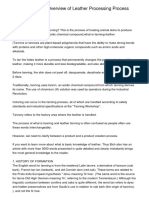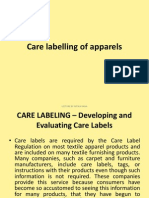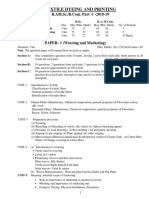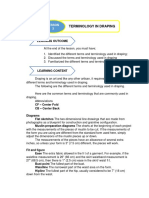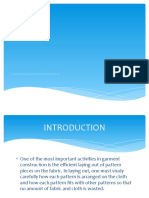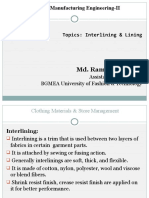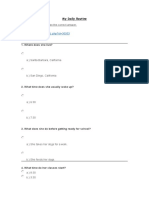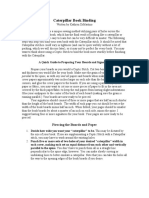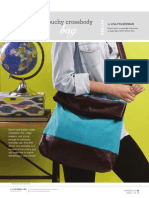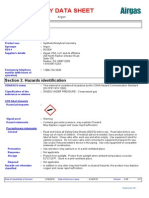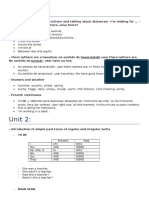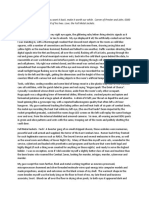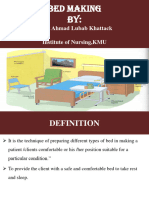0% found this document useful (0 votes)
171 views14 pagesClothing Presentation
The document discusses different methods of controlling fullness in garments, including gathers, pleats, and shirring. Gathers are made by pulling basting stitches to fit a larger piece of fabric into a smaller space. They can be made by hand or machine. Pleats create folds in fabric to release fullness and come in different types like knife and box pleats. Shirring uses multiple parallel rows of stitching to gather fabric in a decorative way. These methods allow garments to fit properly and add visual interest through design details.
Uploaded by
Chichi VevoCopyright
© © All Rights Reserved
We take content rights seriously. If you suspect this is your content, claim it here.
Available Formats
Download as PPTX, PDF, TXT or read online on Scribd
0% found this document useful (0 votes)
171 views14 pagesClothing Presentation
The document discusses different methods of controlling fullness in garments, including gathers, pleats, and shirring. Gathers are made by pulling basting stitches to fit a larger piece of fabric into a smaller space. They can be made by hand or machine. Pleats create folds in fabric to release fullness and come in different types like knife and box pleats. Shirring uses multiple parallel rows of stitching to gather fabric in a decorative way. These methods allow garments to fit properly and add visual interest through design details.
Uploaded by
Chichi VevoCopyright
© © All Rights Reserved
We take content rights seriously. If you suspect this is your content, claim it here.
Available Formats
Download as PPTX, PDF, TXT or read online on Scribd
/ 14



